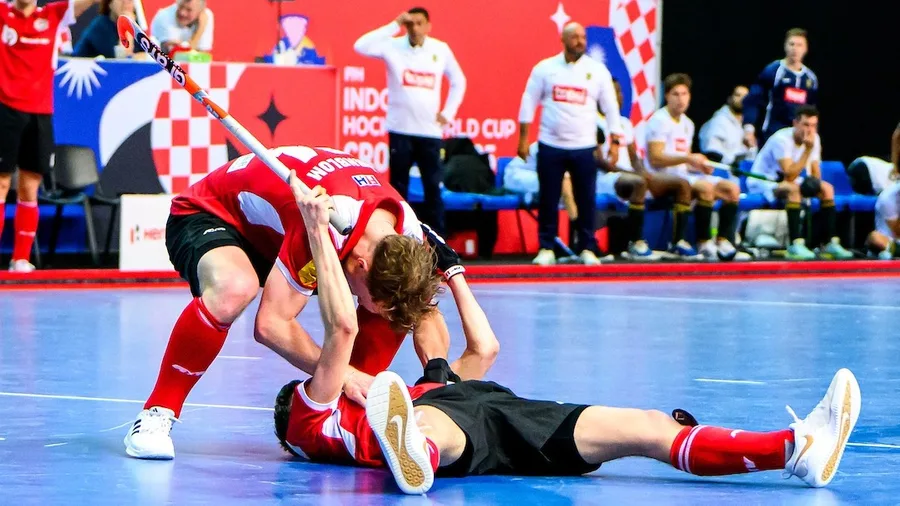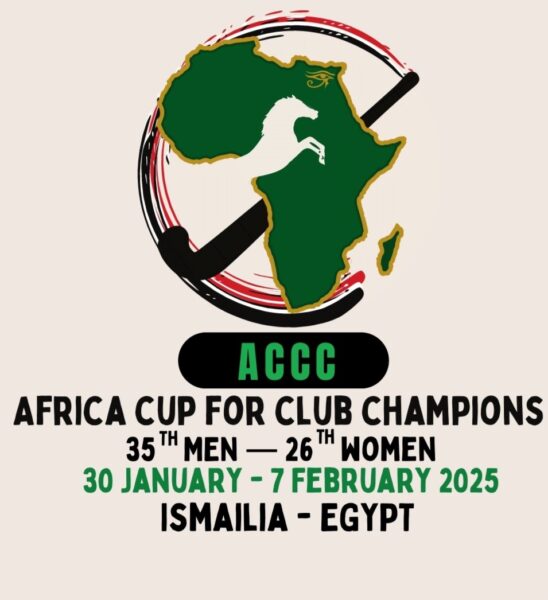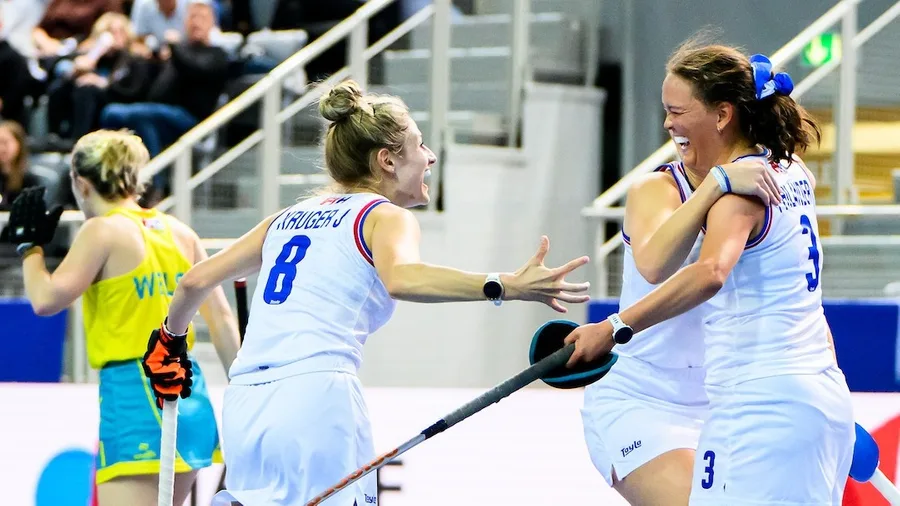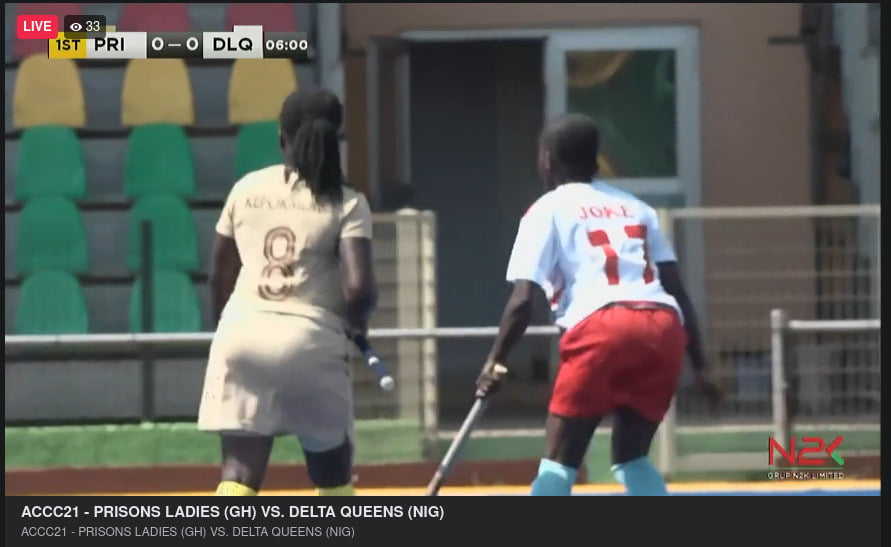04 Feb, 2025 There was plenty more excitement on the second day of the FIH Indoor Hockey World Cup in Poreč, Croatia on Tuesday, with some teams starting to lock in their quarterfinal places while others worked desperately to keep their tournament aspirations alive. Another 70 goals were scored across the 10 matches, taking the tournament tally to 177 from 22 matches in total. Two-time defending men’s champions Austria had to dig deep for their 8-6 win in a fiery encounter against South Africa. Mustapha Cassiem posted another four goals for the South Africans to shoot to the top of the tournament statistics. Austria trailed for most of the match and only snuck ahead in the final quarter. Fülöp Losonci grabbed three goals on his way to being named as the player of the match for Austria and said afterwards: “We exactly knew what they wanted to play and we had a plan, but we started with it too late so they scored two quick goals. But I think we reacted really well, we showed them that we are here.” In the corresponding women’s fixture, Austria proved far too good for South Africa and their 10-0 win boosts them to the top of their pool with a useful goal difference. Katharina Bauer grabbed a hat-trick on the night while Johanna Czech was named player of the match. Comparing the match to their draw a day earlier against Poland, Czech explained: “I think we had a little switch in our head, it was a completely different game, we were totally on from the beginning, that was very much different from yesterday.” Meanwhile, the Czechian women continued their winning form on Tuesday. Currently ranked second in the world, they booked their quarterfinal spot with an impressive 6-2 win against Belgium. Adéla Lehovcová was named player of the match and said: “We feel really good. It was a tough game but we worked really hard and we’re so happy.” Poland’s women ground out an essential 1-0 win over Thailand, scoring early and holding possession for long periods to deny the Thai side any real momentum in the match. A win or even draw against South Africa on Thursday would see Poland safely through to the quarterfinals. After a dominant 12-4 victory over Malaysia in their opener on Monday, Germany’s men extended their impressive run with a comfortable 8-3 win over Iran and currently top their pool. Captain Anton Boeckel received the player of the match award and said afterwards: “I think we had everything under control, didn’t allow much, so quite happy with that.” Argentina’s men came from behind to record a critical 5-2 win over debutants Malaysia, but it needed two Argentinian goals in the final 90 seconds to secure their first win. Argentina’s Juan Eleicegui was named the player of the match and said: “We are very happy for this victory, we needed this match.” Debutants and hosts Croatia had their dreams of progressing to the quarterfinals dashed. The men went down 7-2 to Poland, conceding a flurry of late goals after substituting their goalkeeper to chase a result. Gracjan Jarzyński bagged five goals in his player-of-the-match performance for Poland. Later in the evening, Croatia’s women lost 6-3 to the United States, who now face Belgium in a must-win match on Wednesday. 4 February 2025 Results Men Result: Match 7 (M) Argentina 5 – 2 Malaysia Player of the match: Juan Eleicegui (ARG) Umpires: Ben Goentgen (GER), Ivona Makar (CRO) Result: Match 8 (M) Germany 8 – 3 Iran Player of the match: Anton Boeckel (GER) Umpires: Rachel Williams (ENG), Ayden Shrives (RSA) Result: Match 9 (M) South Africa 6 – 8 Austria Player of the match: Fülöp Losonci (AUT) Umpires: Lukasz Zwierzchowski (POL), Michael Pontus (BEL) Result: Match 10 (M) Poland 8 – 2 Croatia Player of the match: Gracjan Jarzyński (POL) Umpires: Sean Edwards (ENG), Melina Illanes (ARG) Women Result: Match 7 (W) Poland 1 – 0 Thailand Player of the match: Monika Chmiel (POL) Umpires: Zeke Newman (AUS), Ana Ortega (ESP) Result: Match 8 (W) South Africa 0 – 10 Austria Player of the match: Johanna Czech (AUT) Umpires: Kristy Robertson (AUS), Salman (INA) Result: Match 9 (W) United States 6 – 3 Croatia Player of the match: Erin Matson (USA) Umpires: Pieter Hembrecht (NED), Emily Carroll (AUS) Result: Match 10 (W) Belgium 2 – 6 Czechia Player of the match: Adéla Lehovcová (CZE) Umpires: Michelle Meister (GER), Abby Macarthur (WAL) Source: FIH.hockey





